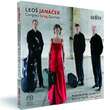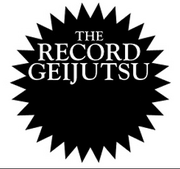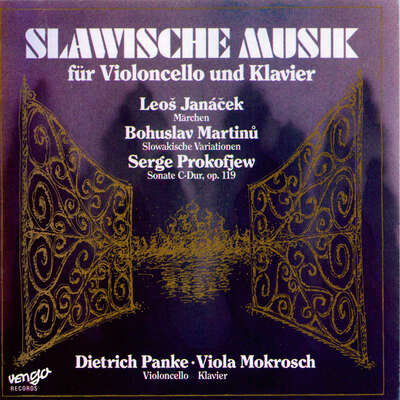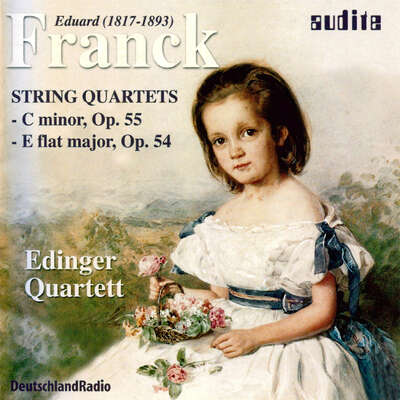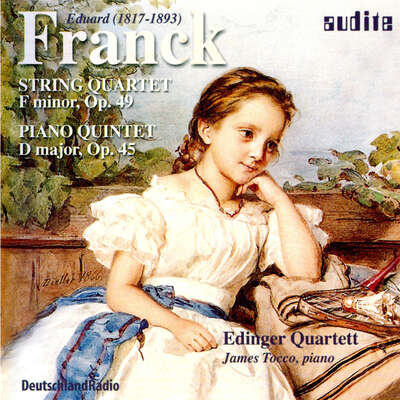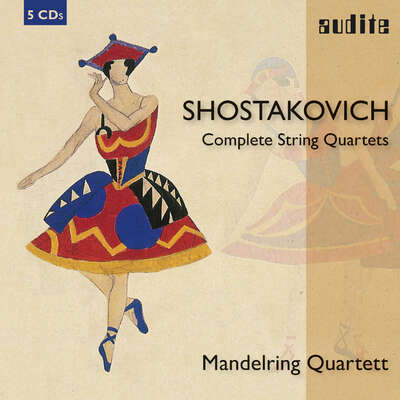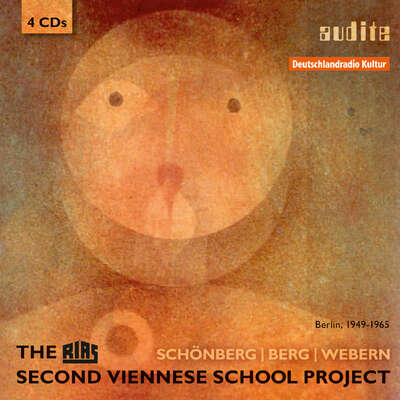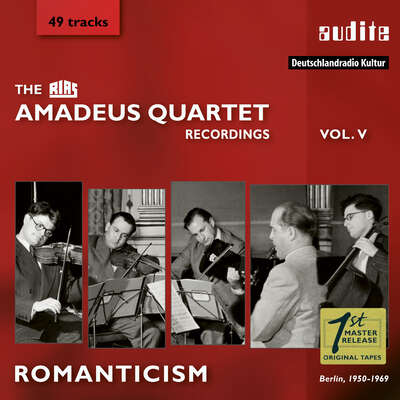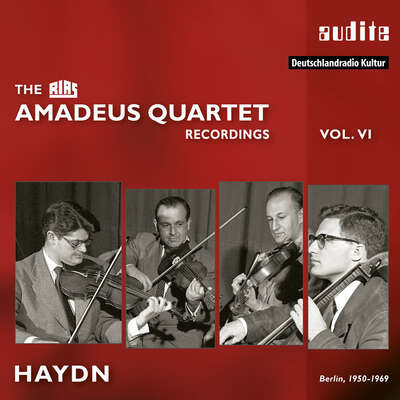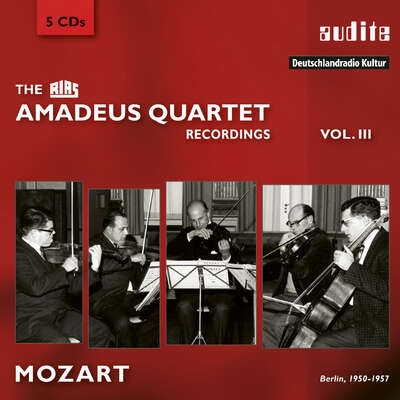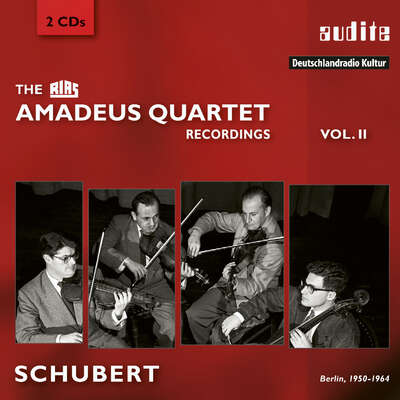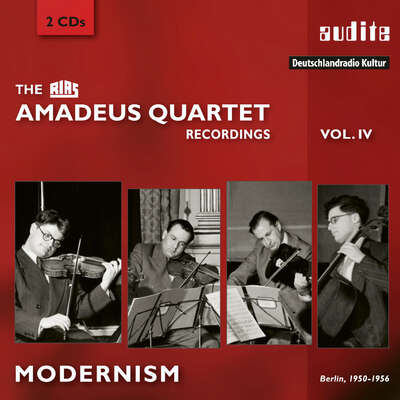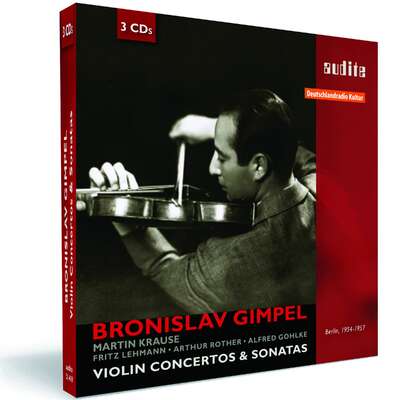
Die beiden Streichquartette aus der späten Schaffenszeit des mährischen Komponisten Leoš Janáček (1854-1928) gehören – neben Werken von Schönberg, Berg oder Zemlinsky – zu den Höhepunkten der modernen Kammermusik zwischen den Weltkriegen. In den Jahren 1923 und 1928 hat Janáček die...mehr
"Plötzlich klingt alles sehnsüchtiger, wehmütiger, beredter und melodiös lyrischer. So werden aus „Intimen Briefen“ wieder „Liebesbriefe“, wie Janacek das Quartett ursprünglich nennen wollte." (Süddeutsche Zeitung)
Titelliste
Details
| Leoš Janáček: Complete String Quartets | |
| Artikelnummer: | 92.545 |
|---|---|
| EAN-Code: | 4022143925459 |
| Preisgruppe: | ACX |
| Veröffentlichungsdatum: | 29. Oktober 2010 |
| Spielzeit: | 67 min. |
Zusatzmaterial
Informationen
Die beiden Streichquartette aus der späten Schaffenszeit des mährischen Komponisten Leoš Janáček (1854-1928) gehören – neben Werken von Schönberg, Berg oder Zemlinsky – zu den Höhepunkten der modernen Kammermusik zwischen den Weltkriegen. In den Jahren 1923 und 1928 hat Janáček die Quartette komponiert und ihnen vielsagende Beinamen mitgegeben. Der Titel „Kreutzersonate“ für das erste Quartett bezieht sich dabei auf eine Novelle von Lew Tolstoi, in der die emotionale Macht der Musik für ein Ehedrama verantwortlich gemacht wird. War schon dieses Quartett insgeheim an Janáčeks Altersliebe Kamila Stösslová gerichtet, so deutet der Beiname des zweiten Quartetts („Intime Briefe“) ziemlich offen auf dieselbe Adressatin hin. Dabei verstärkte der Komponist den amourösen Anlass durch den Einsatz eines Instruments, das die Liebe im Namen trägt. „Das Ganze wird von einem besonderen Instrument zusammengehalten werden“, schrieb Janáček, „es heißt Viola d’amour – Liebesviola.“ Die barocke Viola d’amore erlebte nach langem Dornröschenschlaf zu Beginn des 20. Jahrhunderts eine Renaissance, und Janáček war fasziniert von der silbrigen Klangfarbe des reich verzierten Instruments in Bratschenlage. Leider musste er aus spieltechnischen Gründen letztlich auf die Viola d’amore verzichten und arbeitete das Werk für die normale Bratsche um. Gunter Teuffel (Viola d’amore) und das Mandelring Quartett haben für diese Aufnahme die Urfassung rekonstruiert und bieten Janáčeks zweites Streichquartett jetzt in beiden Versionen für Bratsche und Viola d’amore.
Zusätzliche Informationen zur Produktion, Videoeindrücke von der Aufnahmesitzung und Interviews mit den Musikern finden Sie unter www.audite.de.
Besprechungen
The Absolute Sound | Jan 14th, 2013 | Andrew Quint | 14. Januar 2013 | Quelle: https://www.thea...
The Mandelring delivers idiomatic performances that capture the nervous, speech-like character of Janácek’s music as well as its melancholy-tinged lyricism. Audite’s aural perspective is front-row-immediate, with sharp dynamic contrasts and a widely spread soundstage.Mehr lesen
Chamber Music Magazine | 16.10.2012 | James M. Keller | 16. Oktober 2012
One figure from that list also came close to using the viola d’ amore inMehr lesen
BBC Radio 3 | Sat 29 Sep 2012, 9.00 am | 29. September 2012 BROADCAST CD review
Top recommendation on a single CD (also includes the viola d'amore as well as the viola version of quartet no 2)<br /> <br /> Sendebeleg siehe PDF!Mehr lesen
Sendebeleg siehe PDF!
Sendebeleg siehe PDF!
Fipps - Das Magazin | Januar / Februar 2012 | Georg Rudiger | 1. Januar 2012
Es gibt kaum eine Musik, die so express ist wie Janáceks Streichquartette. Das Mandelring Quartett ist dafür genau das richtige Ensemble. BeimMehr lesen
Musica | dicembre 2011 - gennaio 2012 | Piero Rattalino | 1. Dezember 2011
Janáček era molto interessato alla viola d’amore, che impiegò nelleMehr lesen
Fanfare | November 2011 | Andrew Quint | 1. November 2011
On a superb-sounding SACD, Audite gives us Janáček’s string quartets performed by the Mandelring Quartet, whose Shostakovich cycle was soMehr lesen
www.ClassicsToday.com | 01.05.2011 | David Hurwitz | 1. Mai 2011
The playing here is extremely beautiful for the most part, but in the firstMehr lesen
Fanfare | Issue 34:5 (May/June 2011) | Paul Orgel | 1. Mai 2011
Using short, potent motives, Janáček’s two string quartets communicate emotional states—foreboding, frenzied activity, anguish, and breakdown,Mehr lesen
In the even less musically conventional second quartet, “Intimate Letters” from 1928, the “hero” is Janáček himself, expressing his unreturned passion for Kamila Stössel. Decades ago, these pieces were off the beaten path, with older Czech quartets offering the most fully realized performances. Now, like Janáček’s piano music and violin sonata, they are mainstream repertoire, recorded by many international quartets, though still a specialty of the best, newer Czech groups like the Talich, Prazák, Skámpa, Panocha, and Pavel Haas quartets.
The Mandelring Quartet, a young German quartet, plays them with near-perfect intonation, razor-sharp articulation, and very precise ensemble in these highly recommendable performances. Their playing is showcased by the very vivid sound of Audite’s SACD recording in which the miking pinpoints the exact location of each player. A perfectly adequate version by the Vlach quartet on Naxos seems lackluster after hearing the Mandelring disc with its superior recorded sound and string playing with technique to spare. The older, venerable Smetana Quartet seems restrained by comparison. My favorite recording, by the Janáček Quartet, offers something less overwrought than the edgy, modern norm in these pieces, more sense of dialogue between the instruments and of space between events.
Along with its extraordinary recorded sound, the Mandelring’s disc stands out among a surplus of excellent versions of these works for including an alternate version of the second quartet. Janáček originally scored “Intimate Letters” for viola d’amore in place of the standard viola, and here, violist Gunter Teuffel performs on the actual instrument that Janáček knew—it belonged to Rudolf Reissig, a violin professor at the Brno Organ School from 1903 to 1909—in a reconstructed version of the quartet.
Aside from an obvious change in which the first movement opens with pizzicato instead of arco playing from the violins, the revisions are hard to hear. What’s fascinating is how the gentler timbre of the viola d’amore, often the work’s melodic protagonist, sweetens the tone of Janáček declarations of love. The other instruments react with adjustments to their volume and the general effect is less fierce than with the more projected voice of the normal viola. If you love this piece, the viola d’amore version gives insight into what Janáček imagined, but it’s very subtle and I wouldn’t call it a revelation.
I recently attended an excellent concert by the French Diotima Quartet in which “Intimate Letters” was programmed together with Alban Berg’s 1925–26 Lyric Suite, a pairing that makes great sense since the two works are roughly contemporaneous and both have secret romantic dedications. Seeing these two dynamic pieces by two master opera composers performed made them more exciting and accessible than any recording. The Diotima has recorded both versions of “Intimate Letters.”
Strings Magazine | May 2011 | Edith Eisler | 1. Mai 2011
Leos Janácek (1854–1928) was in many ways a unique composer. He was profoundly influenced by the Moravian folk music and the speech patterns of theMehr lesen
Among the great Czech quartets, this recording by the Mandelrings—Sebastian and Nanette Schmidt, violins; Roland Glassl, viola; Bernhard Schmidt, cello; and Gunter Teuffel, viola d’amore—is one of the best. The players’ tone is rich and warm. The balance is exemplary, the texture clear; lines stand out and interweave in a colorful tapestry. They enter into all the changes of mood and expression: the melodies melt with tenderness and sorrow, the dances leap boisterously
Janá?ek’s life and work were closely intertwined: he wrote all his late compositions for the young woman who had become his muse. In the Second Quartet, “Intimate Letters,” the viola part was originally written for viola d’amore (the instrument of love), but finding a player for it proved to be so difficult that Janá?ek rewrote it for viola. This recording presents both versions, a most interesting idea: the d’amore’s mellow sound and Baroque inflections underline the music’s tender, pleading intimacy.
Scherzo | Jg. XXVI, N° 265 | Santiago Martín Bermúdez | 1. April 2011
Continúa la insistencia de las formaciones para cuarteto en estas dosMehr lesen
hifi & records | 2/2011 | Uwe Steiner | 1. April 2011
Leos Janácek
Streichquartette Nr. 1 und Nr.2 (2 Fassungen)
Auf sieben Spiel- und ebenso vielen Resonanzsaiten lässt die Viola d'amoreMehr lesen
Stuttgarter Zeitung | Nr. 61 | Dienstag, 15. März 2011 | Uwe Schweikert | 15. März 2011
Alterswildheit
Streichquartette. Das Mandelring-Quartett hat Leoš Janáceks packend emotionale Werke technisch perfekt eingespielt
Von Altersmilde keine Spur! Wie Beethoven und Verdi hat Leoš Janácek inMehr lesen
Pizzicato | N° 211(3/2011) | Guy Wagner | 1. März 2011 Neue Massstäbe
Eine besondere Originalität bekommt diese Neuproduktion der beiden Janácek-Quartette durch die Tatsache, dass das zweite, 'Intime Briefe', in zweiMehr lesen
Faszinierend ist dann der Vergleich der beiden Fassungen der 'Intimen Briefe'. Zur Information: Die Liebesviola ist ein Instrument mit sieben Saiten und dazu noch Resonanzsaiten, ihre Klanglage ähnelt derjenigen der Bratsche. Da aber der Bratschist der Uraufführung die Viola d'amore nur ungenügend spielen konnte, musste der Komponist schweren Herzens die Stimme für Bratsche umschreiben. Für die Mandelring-Einspielung der Originalfassung mit Viola d'amore musste diese von einem Janácek-Exegeten rekonstruiert werden, und statt des gewohnten Bratschisten des Quartetts, Roland Glassl, wurde ebenfalls ein Spezialist des ungewöhnlichen Instruments, Gunter Teuffel, ins Projekt eingespannt.
Es ist ungemein interessant zu erfahren, wie sich die beiden Fassungen unterscheiden. Ich muss gestehen, dass ich die Viola d'amore-Version der traditionellen vorziehe: Sie gibt stärker den Charakter des 'Intimen' wieder, den diese musikalischen 'Briefe' nun einmal haben. Beide Fassungen werden von Sebastian Schmidt, Nanette Schmidt, Bernhard Schmidt und ihrem jeweiligen Partner mit jener phänomenalen Präzision, Akribie und Intensität gespielt die man von diesen Interpreten gewohnt ist. Und wieder setzen sie Maßstäbe…
American Record Guide | 01.03.2011 | Carl Bauman | 1. März 2011
This edition undoubtedly has the best sound of any and certainly the best notes…<br /> <br /> To read the complete review, please visit American Record GuideMehr lesen
To read the complete review, please visit American Record Guide online.
To read the complete review, please visit American Record Guide
www.ResMusica.com | 11 février 2011 | Jean-Luc Caron | 11. Februar 2011 Les Mandelring au service de Janáček
A peine est-on entré dans l’univers musical de Leoš JanáčekMehr lesen
www.SA-CD.net | February 7, 2011 | Polly Nomial | 7. Februar 2011
Yet another magnificent disc from this wonderful ensemble.<br /> <br /> After aMehr lesen
After a
Neue Zeitschrift für Musik | 02/2011 | Lutz Lesle | 1. Februar 2011
Janácek, Leoš
Complete String Quartets
Nächst den sechs Streichquartetten Bartóks zählen Kenner die beidenMehr lesen
Record Geijutsu | February 2011 | 1. Februar 2011
japanische Rezension siehe PDF!Mehr lesen
Diapason | No. 588 (février 2011) | Jean-Charles Hoffelé | 1. Februar 2011
Les Mandelring suivent l'exemple (pionnier) des Diotima et rendent au deuxième quatuor la viole d'amour voulue par Janacek (qui l'invitait dès 1905Mehr lesen
Mais il existe une nette différence entre les deux disques: chez les Mandelring, le recours à la viole ne change pas vraiment l'angle de vue. Le récit demeure, alto ou viole, totalement névrotique. En privilégiant le tranchant du discours, en mettant des mots (voire des cris) derrière les notes, leur double lecture des «Lettres intimes» ouvre grand les portes de l'opéra; une manière forte admirable si l'on consent à l'abandon de tout espace réflexif. Les micros sont dans le quatuor, tout prend un relief que l'on n'avait pas entendu depuis la version acerbe des Janacek. La viole apporte tout juste une dimension lyrique supplémentaire: elle fait un peu bande à part dans ce geste rageur. Les Diotima, eux, se pliaient davantage à sa poésie singulière. Subtilité de sybarite, car devant cette fougue, on croit voir le compositeur bouillant de passion.
Cette même présence physique anime jusqu'à la saturation une interprétation déclamatoire du Quatuor n° 1, visionnaire lecture de la Sonate à Kreutzer de Tolstoï qui narre le meurtre d'une femme adultère par son mari. C'est ici la silhouette menaçante de Pozdnychev qui surgit à nos oreilles. Le génie de Janacek en fait un mélodrame pour quatre instruments que les Mandelring portent jusqu'à l'insoutenable. La puissance sans fard de leur jeu, la plénitude de leur geste vont très loin dans le sens caché de l'œuvre.
Wiener Zeitung | Donnerstag, 20. Jänner 2011 | me | 20. Januar 2011
Vergleichen macht sicher
Janacek, Leos: Streichquartette
Das deutsche Mandelring Quartett hat sich mit der Kammermusik von LeosMehr lesen
www.SA-CD.net | January 4, 2011 | Beagle | 4. Januar 2011
[this began as a reply to jdaniel in the Discussion thread, whoMehr lesen
Classical Recordings Quarterly | Spring 2011 | Tully Potter | 1. Januar 2011
In the 1970s, when I was researching a monograph on Czech viola players, I discovered that, contrary to received opinion, the viola d'amore had neverMehr lesen
This is at least the third recording of the restored original version. The 1997 disc by Kubín Quartet members and the American John Calabrese (Supraphon SU3349-2) and the 2008 disc by Quatuor Diotima members and Garth Knox (Alpha 133) use the edition prepared by four Czech scholars and now published by Bärenreiter. Teuffel has consulted Dr Milan Škampa of the Smetana Quartet and leading authority on Janáček's quartets, who has material not available to the Bärenreiter team. The result sounds authoritative to me and although you pick up the wirier sound of the viola d'amore, you hardly notice that the viola part is being played by a less voluminous instrument than usual. What you do notice, straight away, in both Bärenreiter and this even newer edition, is that the main theme is hammered out pizzicato at the start – Janáček's revision is much better here. I have not heard the Alpha CD but the Supraphon is very well played, albeit recorded more distantly and resonantly, and the three-quarters Czech ensemble moves more naturally at times, especially in the nostalgic main theme of the Moderato where the Germans are slightly stiff and self-conscious.
The Mandelring Quartet plays extremely well in the Kreutzer Sonata and the normal version of Intimate Letters. My only nagging doubt is crystallised once again by that Moderato theme: the Germans have prepared the music meticulously but the syntax is not as familiar to them as to the best Czech ensembles. They are superbly recorded, quite close up but not claustrophobically so, and the disc can heartily be recommended to the curious, as I feel these players have the edge with their newly prepared edition of the original Intimate Letters.
www.allmusic.com | 01.01.2011 | Mike D. Brownell | 1. Januar 2011 Janácek: Complete String Quartets
Leos Janácek did not produce string quartets until the last decades of hisMehr lesen
Stereoplay | Januar 2011 - 1/2011 | Martin Mezger | 1. Januar 2011 Leos Janácek, Streichquartette Nr. 1 und Nr. 2 (zwei Fassungen)
Wenn alte Kerle um junge Dinger balzen, führt das manchmal aufMehr lesen
Ostthüringer Zeitung | Jg. 20, Nr. 307 | Dr. sc. Eberhard Kneipel | 31. Dezember 2010 Einfallsreiche Liebeserklärung
Obwohl es viele schöne und legendäre Aufnahmen der beidenMehr lesen
www.musicweb-international.com | December 2010 | Siebe Riedstra | 31. Dezember 2010 A must-have for Janáček-fans and chamber music aficionados alike
Leoš Janáček is a unique phenomenon in the history of classical music. He was born in humble surroundings in 1854 in the small Moravian town ofMehr lesen
In the summer of 1917, while on holiday at his beloved spa Lucacovice, he met a beautiful woman half his age, with whom he fell madly in love. A love-affair never materialized, but she was to remain the object of his affection for the rest of his days. While staying faithful to her husband and children, Kamila Stösslova maintained an extensive correspondence with the aging composer. Some six hundred letters that Janáček wrote to her have been preserved and published, and a large number of his works are dedicated to her. The inspiration Janáček found in his love for Kamila not only prompted him to compose five operas, but also made him turn to the more intimate medium of chamber music. In his final years he wrote a string quartet, violin sonata, wind quintet, the Concertino for piano, the Capriccio for left hand piano, and his last completed instrumental composition, the second string quartet of 1928.
Both string quartets are dedicated to Kamila Stösslova, and both have nicknames. The first is called ‘Kreutzer Sonata’ after the Tolstoy novel, which refers to Beethoven’s Violin sonata of the same name. Janáček called his second quartet ‘Intimate Letters’, and in a letter to Kamila we read: ‘today, it’s Sunday, I’m especially sad. I’ve begun work on a quartet; I’ll give it the name Love Letters’. Each movement evokes a certain point in their relationship, and when the quartet was near its premiere he wrote that ‘you stand behind every note, you, living, forceful, loving. The fragrance of your body, the glow of your kisses - no, really of mine. Those notes of mine kiss all of you. They call for you passionately’.
To symbolize that love, Janáček chose an instrument that embodies the feminine form both in sound and appearance: the viola d’amore. The viola d’amore is part of the old viol family; it has seven strings plus five resonating strings. The tuning is based on a major triad, not on fifths like the violin. It was very popular in the baroque era, and Antonio Vivaldi wrote several concertos for the instrument. When the viol family was replaced by the modern violin, viola and cello, the viola d’amore lay dormant for several centuries. In the twentieth century, with its renewed interest in old music and instruments, it came to life again. Paul Hindemith, among others, was responsible for resurrecting its use. Janáček fell in love with its sound and used it in his opera Katya Kabanova, another work that was dedicated to Kamila. When he started his second quartet, he decided that he would substitute the viola with a viola d’amore. The viola d’amore has one severe drawback: the sound that it produces is very delicate and soft, and there is no way that it can compete with the much more forceful violin and cello - even when played on gut strings. Janáček abandoned the idea and reverted to the normal viola. Unfortunately an original score has not been preserved.
The Mandelring Quartet asked viola d’amore player Gunter Teuffel to make a reconstruction of Janáček’s original ideas. Teuffel worked out a performance version in which the viola d’amore is reinstated. In a very thorough and elaborate text in the booklet, he explains his decisions. Better yet, the label Audite has provided us with a video that has been published on youtube. In this clip Teuffel explains the way the instrument is built and played, and together with the other members of the quartet he plays important excerpts from the score. He tells us (in German) that the other players are holding back, but to tell the truth, what we hear is a full-blown string quartet. One must assume that the recording technician helped a little in redressing the balance.
Audite presents two recordings of the second quartet, first the published version, and next the reconstruction. An ear-catching difference occurs in the very opening, where the full chords in first and second violin are delivered pizzicato, not arco. This creates space for the fragile sound of the viola d’amore to blossom. To detect most of the other changes one really needs a score - available free of charge in the Petrucci library on the internet. In the video we notice that on the last page of the score it is not the first violin, but the viola d’amore that delivers the high embellished notes that float over the whipping chords of the other instruments.
The Mandelring Quartet consists of three siblings: Sebastian Schmidt leads, his sister Nanette plays second violin, and brother Bernhard cello. Roland Glassl is the viola player. They record exclusively for the label Audite and have won praise for their award-winning issue of the complete string quartets of Dmitri Shostakovich. Musicianship is impeccable and intonation is spot-on. The rough-and-ready attack that mars so many recordings of these very orchestrally conceived scores is fortunately missing. The large helping of general pauses in these pages can turn tricky, but here they are realized to perfection.
The recording is exemplary. The position of each player is defined very precisely, which is something that really matters in the case of the reconstructed Second Quartet. The viola d’amore is placed slightly to the right of centre, and can be followed very easily. This is a must-have for Janáček-fans and chamber music aficionados alike.
Schwäbische Zeitung | 29. Dezember 2010 | man | 29. Dezember 2010 Geheime Botschaften
Nach den eindrucksvollen Schostakowitsch-Aufnahmen hat dasMehr lesen
Fono Forum | Januar 2011 | Marcus Stäbler | 15. Dezember 2010 Liebesinstrument
Im Herbst seines Lebens brach für Leos Janácek noch einmal ein neuer Frühling an: Die Begegnung mit der fast 40 Jahre jüngeren Kamilla StösslovaMehr lesen
Das zweite, mit dem unmissverständlichen Titel „Intime Briefe“, hätte ursprünglich nicht nur – noch deutlicher – „Liebesbriefe“ heißen, sondern außerdem die übliche Bratsche durch eine Viola d'Amore ersetzen sollen: ein ausdrückliches Liebesinstrument also.
Der Bratschist Gunter Teuffel hat nun, mit Hilfe des Janácek-Kenners Milan Skampa, eine mögliche Urfassung dieses zweiten Quartetts rekonstruiert und sie gemeinsam mit dem Mandelring-Quartett aufgenommen – für eine SACD, die auch die etablierte Fassung und das erste Quartett enthält. Die reizvolle Gegenüberstellung ermöglicht einen spannenden Vergleich und lässt uns erahnen, wie der Komponist das Stück gemeint haben könnte. Die siebensaitige Viola d'Amore gibt dem Gesamtklang eine etwas weichere, silbrige Farbe und lässt die leisen Flüsterstellen noch intimer wirken. Auch sonst ist die Aufnahme sehr ausdrucksvoll und intensiv: Das Mandelring-Quartett betont den eruptiven, mitunter fast collagenhaften Charakter der Musik, indem es die schroffen Kontraste schonungslos scharf aufeinanderprallen lässt. Hier spricht die hitzige Emotionalität eines jugendlichen Liebenden von 74 Jahren.
Der Tagesspiegel | Nr. 20 819 | Ulrich Amling | 5. Dezember 2010
Die „Intimen Briefe“ in der wiederentdeckten Originalversion, mit ViolaMehr lesen
Ensemble - Magazin für Kammermusik | 6-2010 Dezember / Januar | Helmut Peters | 3. Dezember 2010 Liebes-Quartette
Besonders das erste Streichquartett mit dem Untertitel "Kreutzer Sonate"Mehr lesen
International Record Review | December 2010 | John Warrack | 1. Dezember 2010
Entitling this record 'Leoš Janáček: complete string quartets', as Audite does, looks rather odd when he wrote only two. The simple explanation isMehr lesen
In 1903, on one of his summer visits to the spa of Luhačovice, Janáček met Kamila Urválková. She had already been the subject of an opera, Kamilla, by, so to speak, a previous relationship with another composer, Ludvík Čelanský, in which to her irritation she was portrayed as an air-headed little flirt. The susceptible Janáček was immediately smitten. 'She was one of the most beautiful of women', he declared in his autobiography (from photographs, one can see that he had a point), adding, 'Her voice was like violas d'amore.' He had come upon the viola d'amore in Berlioz's treatise on orchestration, where its tone is described as 'faible et doux', suitable for 'I' expression des sentiments extatiques et religieux', and he had heard it in a work that much influenced him, Charpentier's Louise. When he then set to work on a new opera, Fate, all about the composition of an opera in a spa, the heroine 'Míla', which also means 'dear', was associated with love music on the instrument (he used it similarly in Kát'a Kabanová, and elsewhere, as can be heard in Charles Mackerras's recordings).
So it was primed in his imagination for the association with Kamila Stösslová, another Luhačovice encounter, the muse of his late years and the subject of the Second Quartet. This was originally subtitled on the autograph sketch 'Listy milostné', 'Love letters': only later came the more discreet title 'Listy důvêrné', usually translated as 'Intimate letters' but better really the more elliptical 'Confidential letters'. Originally, the instrument at the centre of the quartet was to be the viola d'amore; but when the Moravian Quartet came to play the work through to Janáček, he was forced to concede that the instrument was impracticable and reluctantly cut it out. As John Tyrrell sagaciously puts it, in a sub-chapter on the viola d'amore in his Cambridge Opera Handbook on Kát'a Kabanová (Cambridge; 1982), 'While there is much to be said for authentic recordings with the viola d 'amore included ... in general we should regard the instrument as one of the inspirational devices which helped Janáček to compose.'
We live, of course, in an age of 'authenticity', which is also an age of many paradoxes, as when Mackerras candidly admits that with the viola d'amore in Kát'a, ‘Modern recording ... has made it possible to realise [Janáček’s] intention to the letter.' This is less necessary with the string quartet. 'Authenticity' is handsomely served by the viola d'amore player, Gunter Teuffel, using the actual instrument owned by Rudolf Reissig, who taught at Janáček's Organ Conservatory from 1903 to 1909. Pictures show a beautiful instrument, with a broad belly and bridge to accommodate the seven playing strings as well as the seven resonating strings which provide the characteristic halo of sound. The opening solo, however, is partly inaudible. This makes it odd to have chosen to overshadow it by using the opening chordal theme in the powerful version for bowed strings, rather than the lighter pizzicato (there are other differences, deriving from issues with the manuscript and parts). Pizzicato was used on the only previous record with the viola d'amore, clearly played by John Anthony Calabrese with the Kubin Quartet as part of Volume 4 of the fascinating 'The Unknown Janáček' Supraphon series. Later in the movement on the new recording, the molto meno mosso sounds well, and on the penultimate page the adagio solo, singing through carefully disposed chords from the other strings, is beautiful. Similarly, the opening solo of the second movement is sweet and clear, the instrument holds its own in the lilting moderato, and in the finale adds a fascinating colour to the elaborate textures at the espresso section (Fig. 12). There are further complexities of version, it should be added, too complex to be pursued here, as Janáček modified the score. The seriously curious should consult the text published in 2009 as part of the ongoing Janáček Complete Edition.
What of the actual performances? In the First Quartet, the music is very well phrased, with smooth and well-blended tone, though there is some lack of menace, of the sense of living on the edge of an abyss in this reflection of Tolstoy's threatening story. Emotions that are barely controlled can sound too controlled here, and it is part of Janáček's idiom for there to be sudden outbursts that are far from tame. A comparable smoothness marks the playing in the Second Quartet, a sense of emotions running easily and comfortably rather than with such urgency that they have to be held fiercely in check, which is part of the whole situation that led to Janáček composing the work as he did. There are stronger, more urgent performances from the Skampa and Panocha Quartets, not to mention the classic old version by the Talich Quartet, and indeed the excellent Janáček Quartet. Yet for Janáček collectors, this is of course an enthralling disc, and one to engage the attention of anyone gripped by the passionate, even violent interactions of Janáček's life and his music.
concerti - Das Berliner Musikleben | Dezember 2010 | HM | 1. Dezember 2010 Mit Liebe gespielt
Drei Janacek-Streichquartette vereinigt diese CD. Aber ein neues Werk zuMehr lesen
The Strad | December 2010 | Tim Homfray | 1. Dezember 2010
This would count as a desirable disc of Janáček’s quartets even withoutMehr lesen
Süddeutsche Zeitung | Dienstag, 23. November 2010 | Harald Eggebrecht | 23. November 2010
Silberklang der Liebe
Janaceks „Intime Briefe“ erstmals in der Urfassung mit Viola d’amore
Das Mandelring-Quartett ist weltweit erfolgreich unterwegs, betreut einMehr lesen
schallplattenmann.de | Ausgabe #697 vom 22. November 2010 | Sal Pichireddu | 22. November 2010 Klassik – Janáčeks intime Streichquartette, erstmalig mit der Originalfassung des Quartetts "Intime Briefe"
Die beiden Streichquartette von Leoš Janáček (1854-1928) gehören fürMehr lesen
NDR Kultur | 8. November 2010 um 15:20 Uhr | Friederike Westerhaus | 8. November 2010
Seit mehr als 25 Jahren besteht das Mandelring Quartett. Der Erfolg des Streichquartetts lässt sich an zahlreichen Auszeichnungen wie dem "Preis derMehr lesen
Auch auf seiner neuen CD hat sich das Mandelring-Quartett wieder einem spannenden Projekt zugewandt: den beiden Streichquartetten von Leoš Janáček, die in seinen letzten Lebensjahren entstanden. Das zweite Streichquartett hat das Mandelring Quartett sogar doppelt eingespielt, in zwei verschiedenen Fassungen: mit Bratsche besetzt - und mit Viola d'amore.
Die "Liebesviola"
Das Streichquartett "Intime Briefe" von Janáček ist eine Liebeserklärung. Nicht etwa an seine Ehefrau, sondern an die ebenfalls verheiratete Kamila Stösslová, seine Geliebte und Muse. In nur drei Wochen brachte es der 73-jährige Janáček zu Papier und schrieb in einem seiner fast tausend Briefe an Kamila: "Das Ganze wird von einem besonderen Instrument zusammengehalten werden. Es heißt Viola d'amore, Liebesviola."
Die Viola d'amore ist ein Instrument in Bratschenlage, meist mit sieben Saiten und zusätzlichen Resonanzsaiten, das seine Blütezeit im Barock erlebte und einen einschmeichelnden Klang hat. Janáček liebte diesen Klang und setzte das Instrument häufiger ein. Doch der Bratschist des Quartetts der Uraufführung konnte die Viola d'amore nicht gut genug spielen. Janáček schrieb das Werk deshalb für Bratsche um, erklärt Bernhard Schmidt vom Mandelring-Quartett: "Es gibt eine Aussage von Janáček: 'Ich musste sie herausschneiden, aber es war entsetzlich.' Sie lag ihm unglaublich am Herzen, die Viola d'amore, in diesem Werk. Und er hat in der ursprünglichen Partitur vor jede Zeile von Hand extra eingetragen: 'Viola d'amour'."
Höchst lebendiges Gespräch
Das Mandelring Quartett hat mithilfe des Janáček-Kenners Milan Skampa die Fassung für Viola d'amore rekonstruiert und mit dem d'amore-Spieler Gunter Teuffel eingespielt. Für das Quartett, das seit vielen Jahren mit der üblichen Fassung vertraut ist, war die Auseinandersetzung mit der Viola d'amore ein spannender Prozess, erzählt die Geigerin Nanette Schmidt: "Es braucht ein bisschen, bis man auch adäquat reagieren kann. Wir mussten das alles klanglich etwas abspecken, sonst hätten wir ihn totgemacht."
Insgesamt bekommt das Quartett mit der d'amore einen deutlich intimeren Charakter. Durch die Des-Dur-Stimmung erklingen andere leere Saiten als bei der Bratsche. Nicht überall sind die Unterschiede so deutlich, aber der Gesamteindruck verändert sich spürbar. Es wird nachvollziehbar, warum Janáček für "Intime Briefe" ursprünglich die Viola d'amore einsetzen wollte.
Wohltuend ist, dass das Mandelring Quartett beide Fassungen gleichermaßen ernst nimmt. Beide Interpretationen zeichnen sich durch eine große Homogenität aus. Und beide lassen die für Janáček so typischen, dem Alltag abgelauschten "Sprechmelodien" plastisch und greifbar werden - man wird Zeuge eines höchst lebendigen Gesprächs.
Bayern 4 Klassik - CD-Tipp | 6. November 2010 | Julia Schölzel | 6. November 2010
Womit zeigt ein Mann seine Liebe? Mit roten Rosen? Mit kostbarem Schmuck? Der Komponist Leos Janácek hatte mehr zu bieten, als er im Alter von überMehr lesen
"Jubel, heißes Bekenntnis der Liebe, wehklagend; unbezähmbare Sehnsucht, unerbittlicher Entschluß, mich mit der Welt um Dich zu schlagen ... Ach das ist ein Werk, als ob man es aus lebendigem Fleisch herausschnitte. Ich glaube, ich schreibe nichts Tieferes und Wahrhaftigeres mehr."
Starke Worte für starke, übermächtige Gefühle gerichtet an Kamila Stösslova, die junge Gattin eines Altwarenhändlers, die Janáček als Freundin, Geliebte und Muse umschwärmte. Als Symbol größter Nähe setzte Janáček statt der Bratsche die "Viola d'amore" ein:
"Das Ganze wird von einem besonderen Instrument zusammengehalten, es heißt Viola d'amour – Liebesviola ... In dieser Arbeit werde ich mit Dir allein sein. Kein Dritter neben uns."
Aufgekratzte Stimmung
Diese intime Begegnung äußert sich in vier Sätzen, weit entfernt von klassischen Satztypen, dabei voller emotionaler Irrationalität. Plötzliche Tempowechsel, kurze leidenschaftliche Melodiefetzen, zärtliche Elegien, so findet Janáček in der ihm typischen Art eigene "Worte" für die vier Streichinstrumente. Das Mandelring Quartett mit Gunter Teuffel an der Viola d'amore meistert souverän diese spieltechnisch anspruchsvolle Janáčeksche Syntax und schafft es, durch die Fülle der Klangfarben vom rauhen Schreien bis zum fahlen Säuseln eine in der Tat aufgekratzte Stimmung zu kreiieren, die dem unsteten Getriebenensein verpflichtet ist.
Rekonstruktion der Urfassung
Eine Besonderheit bezüglich des 2. Streichquartetts konnte das Mandelring Quartett für diese CD initiieren: Den ursprünglich für Viola d'amore konzipierten Part mußte Janáček aus aufführungsspraktischen Gründen für die Bratsche umschreiben. Diesen Weg gehen jetzt die Quartettmusiker gemeinsam mit Gunter Teuffel rückwärts. Aus Skizzen und anderem Recherchematerial rekonstruierten sie die Urfassung des 2. Streichquartetts, beide viersätzigen Versionen befinden sich auf der CD und laden zum aufschlußreichen Vergleichen ein.
Einheit von Wort und Musik
Im ersten Werk dieser CD angeregt und aufgeregt durch Tolstois Erzählung "Die Kreutzersonate" protestierte Janáček gegen die Rachehandlungen des gehörnten Ehemanns in einer Art moralischem Kontrapunkt. Dass er dafür sprechende, ja anklagende Klänge in seinem ersten Streichquartett fand, zeigt in dieser packenden Aufnahme des Mandelring Quartetts einmal mehr die herausragende Gabe Janáčeks, Wort und Musik, Sprache und Melodie als sinnstiftende und sinnliche Einheit zu begreifen.
Rondo | Nr. 650 / 23. - 29.10.2010 | 23. Oktober 2010
Das Mandelring Quartett entwickelt sich derzeit dank seiner erstaunlichenMehr lesen
theartsdesk.com | Saturday, 23 October 2010 | Graham Rickson | 23. Oktober 2010
Complete string quartets? Janáček left us just two, but this new release commands attention with a reconstruction of the Second Quartet in itsMehr lesen
The Second Quartet, better known as Intimate Letters, is an explicit declaration of love to Janáček’s much younger mistress, composed over a three-week period in 1928. His original scoring rather appropriately included a viola d’amore, an archaic seven-stringed viola variant with sympathetic strings under the fingerboard, vibrating with each bowed note. Janáček’s original viola player found the instrument too difficult to manage, so the quartet was revised for conventional viola. "So I had to cut the viola d’amore, but it was awful" was Janáček's comment after revising the work. Gunter Teuffel’s edition is based on surviving original scores, and the tone of the viola d’amore is immediately apparent when the two versions are compared. There are several other changes too, notably the original pizzicato opening to the first movement, better matched to the softer, veiled tone of the viola d’amore solo. This issue is more than a fascinating curiosity, with the Mandelring Quartet fully at ease with the technical demands of both quartets. There’s a magical largamente climax in the middle of the Second Quartet’s third movement and it sounds stunning here – an explicit declaration of love, the first violin singing out in the upper register. Both works are masterpieces, and I envy anyone hearing them for the first time.
Kulimu | 36. Jg. 2010 Heft 3 | ts | 1. September 2010 Leoš Janáček: Complete String Quartets
Im Jahre 1990 erschienen unter dem Titel "Hádanka Života" (Die RätselMehr lesen
Diverdi Magazin | siglo XX, 199/enero 2011 | Mel Smith-Window | 1. April 2010
Janácek al límite de sus posibilidades
Los cuartetos de cuerda del moravo, por el Mandelring
En los últimos años se han ido sucediendo diversas lecturas discográficas de los dos sensacionales cuartetos de cuerda de Leos Janácek, lo que sinMehr lesen
La versión del Mandelring Quartett objeto de esta reseña es técnicamente perfecta, más "clásica" que la del Skampa, o si se quiere, más "familiar", como dicen sus miembros, una familia de virtuosos perfectamente compenetrados pero que dan una idea de estos cuartetos como obras de lucimiento personal, lejos de manifestar la idea del compositor de "protesta moral contra el despotismo del hombre en su relación con la mujer". El gran aliciente de esta grabación es, sin embargo, la inclusión de la viola d'amore en el Segundo Cuarteto, del que se ofrecen por lo demás ambas versiones. Este instrumento tiene el inconveniente de su bajo volumen, pero Janácek lo escogió como representación única del amor puro y simple, identificándolo con la personalidad de su amada (que no amante) Kamila Stosslová, a la cual están dedicados ambos cuartetos. En la versiones definitiva, así como en la ópera Kata Kabanova, el compositor debió suplir el instrumento por una viola normal. Gunter Teuffel resuelve diáfanamente los problemas técnicos y sonoros de la viola d'amore y el resultado es una versión más dinámica y realista que con la transcripción a viola normal.
